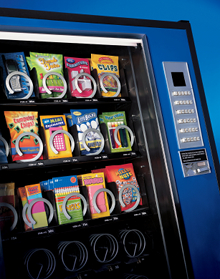Minimize the number of choices
Datum: 2013-04-10 15:59

During an ordinary day we are faced with a number of choices.
- ”Where should I put this particular document so that I can find it easily later?”
- “What is my next step?”
- “Should I call or e‑mail the client?”
- “I haven’t heard from X in a few weeks, is it time to give him a call or will he think that I am pushy if I do?”
- “We need backup in the next few weeks to come. Who should we ask for assistance?”
- “Where do you want to have lunch today?”
- “Who needs to attend the meeting?”
- “Do you want a receipt?”
- “Debit or credit?”
- “Which e‑mail should I respond to first?”
Every choice we need to make demands our attention and energy. We cannot think about one thing and make a conscious choice about something else simultaneously.
Naturally, the choices critical to our business are of greater importance to us, but most of the choices we are faced with concerns rather trivial matters. We might even consider the sheer number of choices we continuously need to make as distractions, directing our attention away from the work we do in the business’ most important facets.
Decrease and experience an increase
If you are seeking to find a smoother way through your workday, decrease the number of choices you are faced with during a day. That is to say, remove as many choices as you possibly can that are not of any real importance to you anyway.
This way you will have longer periods of time when you are not interrupted by for instance having to make a choice. And you no longer have to waste valuable time on evaluating options concerning irrelevant and trivial choices.
Try doing this
- Store documents in only a few different places.
- Choose and decide to use a single “saving everything in the cloud”-service and resolve to use only this one. Sure, go ahead and try the new services you hear of, but only use one at a time for the majority of your documents.
- Reduce the amount of “noise” so that you only see a small portion of what you are doing at the moment:
- Filter your e‑mail according to
- When the e‑mail arrived
- Who the sender is
- What subject the e‑mail concerns (search for keywords)
Filter your to-do-list by
- Project
- The amount of time the task will require
- Context
- When it needs to be done
- Filter your e‑mail according to
- Receive recommendations with open arms and let someone else choose for you. Ask the waiter what his favorite dish is, listen to the Spotify-playlists you find in blogs while working, ask the hotel receptionist what you mustn’t miss when in town.
- Become a regular customer so that your supplier knows exactly how you want your orders, and so that you in the end barely have to place the order at all.
- Decide what brand, model and size you prefer when it comes to a product you frequently use and order only this every time you order it (and for as long as you are still happy with the product).
- Map out your most frequent processes, decide how you want them to flow from now on and document them, hence making them accessible and available (for instance in the form of checklists). Doing this will rid you of the nuisance of having to think a process through and make choices every time you do it. Instead you can lean back and depend on the process that you have at some point thought through and documented thoroughly.
Have less (choices) and reduce your mess
If you reduce the number of choices you need to make in a day, you will be able to concentrate on what you need and want to put your energy into. You will not be distracted and will experience a better work-flow. If you after a while should want more variation, simply start making more choices again.
What’s your way?
How do you minimize the number of insignificant choices? Write a comment to let me know.




